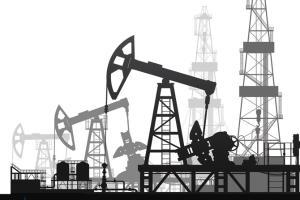Public rage has switched gears, thanks to the ever-rising prices of petrol and diesel

Illustration/ Ravi Jadhav
Can't levy it alone
Here are the taxes you pay on fuel:
* Central Excise Duty: On Petrol, which is at Rs 21.48 per litre, whereas for Diesel, it is at Rs 17.33 per litre.
* State VAT: Around 21 states have a 25 per cent Value Added Tax on petrol, with Mumbai having the highest at 39.12 per cent. State VAT on diesel is more than 20 per cent in 14 states, with the highest in Andhra Pradesh at 28.08 per cent.
* Add it up: In Delhi, for every Rs 100 you pay for petrol, Rs 45.9 goes to the government in the form the taxes in Delhi. The amount of taxes differs in all states based on their VAT and other factors.
'The reason why we pay such high taxes on petrol is because around 15 years ago, a bureaucrat at the Centre, on the instructions of the minister of his department, changed paise to per cent on the tax applicable to fuels, and the rule stuck'
Nitin Dossa, president, Western India Automobile Association
ADVERTISEMENT
When BJP was pe-trolled
On September 10, the Bharatiya Janata Party (BJP) tweeted an image with a graphic named 'Truth of hike in petroleum prices,' to display how they were handling the fuel price hike better than the UPA regime. The graphic was reportedly aimed only at showing that the 13 per cent increase since 2014 was lower than in previous years. Regardless, it was relentlessly trolled on social media, and soon received a rebuttal from the Congress, who tweeted an image saying they'd 'fixed' the graph.
From the ground up
* Crude oil is often found in remote places. Underground, it is formed when oil and gas move upwards from the rock they were formed in and get trapped in porous rocks. Places where they are concentrated are first located through a very expensive and often unsuccessful process.
* Once that happens, they are extracted by drilling into those rocks – vertically if it's a conventional oil field and through hydraulic fracking if it is located in shale rocks. Under pressure, the oil and gas rise into the pipe, where the gas separates and stabilises the oil. However, before being transported safely to a refinery, the crude oil and gas need to be separated.
* The oil and gas are then moved to a refinery – usually located far away to keep the toxic gases away from humans and animals – via a pipeline or a ship.
Era of refinement
* Once in the refinery, the dark and sticky crude oil is turned into several products like petrol, diesel, jet fuel, waxes, kerosene, etc, through processes like cracking, isomerisation, reforming and alkylation.
* The crude oil is primarily boiled, after which it is separated into liquids and gases that are turned into petrol, diesel, etc after some more processing.
* LPG is found at the very top of the distillation tower, while kerosene is in the middle, and the remaining fractions settle at the end.
Barrel to tank
* Once processed, the finished products derived are transported to parts of the country where they were made or exported to those nations that buy from petroleum processing countries.
* In 2017, Middle Eastern countries accounted for the highest dollar value of crude oil exports with shipments valued at $356.3 billion or 42.4% of globally exported crude oil.
* In 2017, China surpassed the US in annual gross crude oil imports in 2017 by importing 8.4 million barrels per day compared to US's 7.9 million barrels per day.
* India is the fourth largest importer, bringing in crude oil worth $60.2 billion last year.
$87.72 bn
Price of the 219 million tonnes of crude oil
= 10 billion
219mn
tonnes of crude oil India was pegged to import in 2017-18
= 10MN ton of crude oil
Rs 823cr
Amount every dollar per barrel change in crude oil prices impacts India's import bill by
= 100 crore
80%
of oil India imports
= 10 percent
32.6mn
tonnes of domestic crude oil production in April-February 2018
= 2mn tonnes
186.2mn
tonnes of crude oil consumed domestically in the first 11 months of 2017-18
= 10mn tonnes
Rs 10Lcr
Amount the Centre is projected to earn from levies on petrol and diesel between 2014-15 and 2018-19
= 1L crore
105m
Barrels of oil the daily world consumption would amount to in 2030
= 1L crore
Catch up on all the latest Mumbai news, crime news, current affairs, and also a complete guide on Mumbai from food to things to do and events across the city here. Also download the new mid-day Android and iOS apps to get latest updates
 Subscribe today by clicking the link and stay updated with the latest news!" Click here!
Subscribe today by clicking the link and stay updated with the latest news!" Click here!







